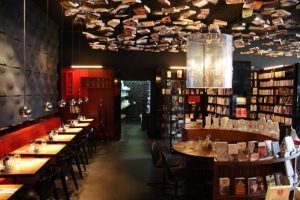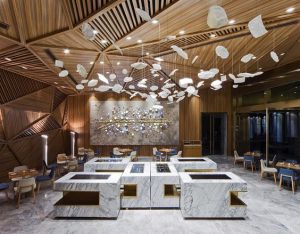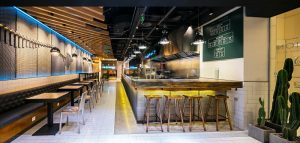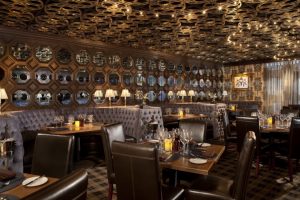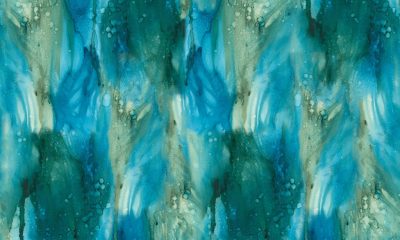While delicious food and high-quality service is essential for the success of a restaurant, the ambience of a restaurant is of equal significance. In today’s market, there is a plethora of dining options. Having a design that will draw in customers is integral to a restaurant’s prosperity. An interior designer must incorporate brand, story and style all into one when designing a restaurant. The following are some retail design trends and considerations for restaurants in 2017.
1. Concept/Theme Based-Design
Having either a conceptual or theme-based design allows for a more personal dining experience and is proven to be more inviting and energizing. The top restaurant designers develop interiors that portray a story that unfolds while people dine. This helps to build customer satisfaction and loyalty.
Advertisement
2. Natural Textures and Materials
Incorporating natural textures derived from nature continues to be a popular design trend utilized by designers. Using more than one material and mixing either wood, brass, leather, tile, marble or metal add dimension and heightens the consumer’s dining experience.
The Mission Fresh Grill, located in Beijing’s recently constructed China World Mall, illustrates the mixing and combining of natural textures and materials. 5 Star Plus Retail Design worked with The Mission to convey its brand identity throughout the restaurant through uses of natural wood, high-quality materials and stainless steel. These natural elements not only draw people in to eat, but also signal to customers the emphasis of high-quality ingredients.
3. Ambient Lighting and Ceiling Design
Advertisement
Ambient lighting, customized pendant lighting and recessed mood lighting has grown in popularity among restaurant interior designers. Lighting has evolved to provide two purposes—exuding light and providing art. Contrast to previous years, interior design for restaurants has departed from the dark and industrial chic look and is moving towards a brighter, more modern appeal. Ceiling designs have begun showcasing and exposing wood or unconcealed metal pipes to give way to a more innovative atmosphere. Lighting and ceiling choices assist in creating interesting imagery with the intent of luring guests in.
4. Vintage with a Modern Touch
Adding elements of glamour and vintage flare to modern interior design layouts provides a sophisticated and glamorous feel. Luxe trimmings, velvet upholstery and glamorous patterns provide a sleek and refined atmosphere.
Advertisement
5. Color Tones
Greens, specifically light green, is a trending color for retail design in 2017. This color exudes a refreshing and revitalizing charm that symbolizes a fresh start. In addition, colors that are vibrant with earthy tones are great accents. Pastels and chroma (graphic colors) contribute to an organic feel.
6. Minimalism
Like previous years, minimalism is a key design element that has the power to open even a small space. A simple, clean look is proven to make people feel calm and happy. Minimalism also allows for flexibility and functionality in the design layout. In restaurants, a minimalistic layout gives way for easier navigation.
All 6 trends serve to provide consumers with both a visually appealing and enthralling look that will draw them in to dine. The trends are extremely conscious of keeping balance and harmony in mind. With continual growth in the restaurant industry, restaurants must constantly keep up with the latest trends. Having a clear concept store design will make the incorporation of trends into the layout easier. At the end of the day, people are quick to judge and one glance is all a consumer needs to tell if they are interested or not. Thus, for restaurants, making the right first impression through an impressive design layout is imperative.


 Photo Gallery7 days ago
Photo Gallery7 days ago
 Headlines6 days ago
Headlines6 days ago
 Headlines1 week ago
Headlines1 week ago
 Headlines2 weeks ago
Headlines2 weeks ago
 Designer Dozen2 weeks ago
Designer Dozen2 weeks ago
 Headlines1 week ago
Headlines1 week ago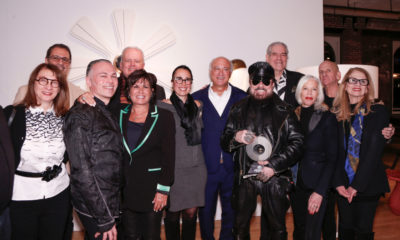
 Special Reports2 weeks ago
Special Reports2 weeks ago
 Designer Dozen5 days ago
Designer Dozen5 days ago
